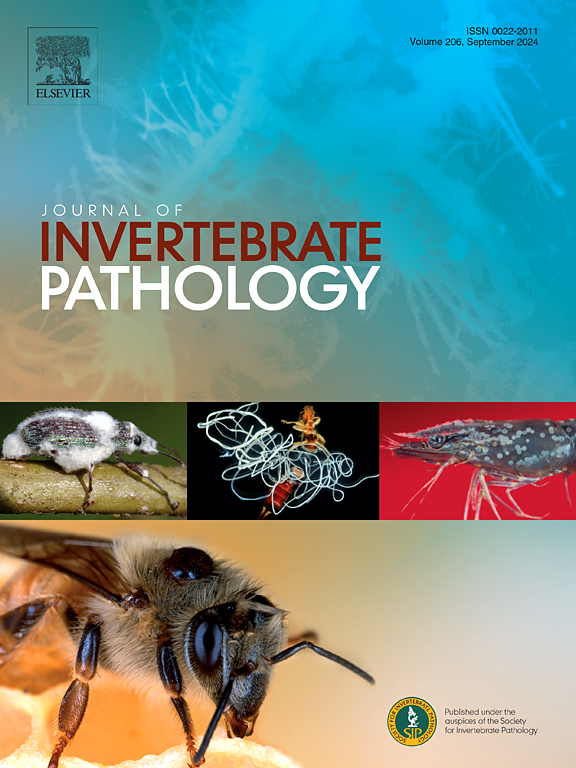球孢白僵菌线粒体蛋白酶和过氧化物酶体蛋白酶在环境适应和病理生物学上存在功能差异
IF 2.4
3区 生物学
Q1 ZOOLOGY
引用次数: 0
摘要
Lon蛋白酶属于AAA - atp酶家族,通过维持细胞蛋白稳态发挥全面的生理作用。本研究旨在探讨Lon蛋白酶在丝状昆虫病原真菌球孢白僵菌的生物防治潜力中的作用。球孢酵母含有线粒体和过氧化物酶体lon1和BbLon2蛋白酶,通过基因破坏和互补对其进行了功能分析。BbLon1有助于真菌对氧化、热、高渗和细胞壁扰动胁迫以及铁缺乏的耐受性。BbLon1和BbLon2在分生孢子和菌丝的疏水性中起共同作用,但BbLon2在分生孢子和菌丝的疏水性中起重要作用。BbLon1在病理生物学中比BbLon2发挥更重要的作用,包括穿透角质层、免疫逃逸、体内发育、细胞外酸化和真菌病。目前的研究结果表明,线粒体Lon蛋白酶在球孢白僵菌的生命周期中起着比过氧化物酶体更重要的作用。该研究为昆虫病原真菌的生物防治效果提供了深入的细胞器功能知识。本文章由计算机程序翻译,如有差异,请以英文原文为准。

Mitochondrial and peroxisomal Lon proteases are functionally divergent in environmental adaptation and pathobiology of the entomopathogenic fungus Beauveria bassiana
Lon protease belongs to the AAA‑ATPase family and plays comprehensive physiological roles via maintaining cellular protein homeostasis. This study seeks to explore the functions of Lon protease in biocontrol potential of the filamentous entomopathogenic fungus Beauveria bassiana. B. bassiana contained mitochondrial and peroxisomal Lon proteases (BbLon1 and BbLon2) which were functionally analyzed via gene disruption and complementation. BbLon1 contributed to fungal tolerance to oxidative, thermal, hyperosmotic, and cell wall-perturbing stresses as well as iron deficiency. Both BbLon1 and BbLon2 co-functioned in conidiation, but BbLon2 had a significant role in the hydrophobicity of conidia and mycelia. BbLon1 played more important roles in pathobiology than BbLon2, including penetration through the cuticle, immune evasion, in vivo development, extracellular acidification and mycosis. Current findings indicate that mitochondrial Lon proteinase plays more predominant roles in lifecycle of B. bassiana than peroxisomal one. This study provides in-depth knowledge for organellar functionality essential for biocontrol efficacy of the entomopathogenic fungi.
求助全文
通过发布文献求助,成功后即可免费获取论文全文。
去求助
来源期刊
CiteScore
6.10
自引率
5.90%
发文量
94
审稿时长
1 months
期刊介绍:
The Journal of Invertebrate Pathology presents original research articles and notes on the induction and pathogenesis of diseases of invertebrates, including the suppression of diseases in beneficial species, and the use of diseases in controlling undesirable species. In addition, the journal publishes the results of physiological, morphological, genetic, immunological and ecological studies as related to the etiologic agents of diseases of invertebrates.
The Journal of Invertebrate Pathology is the adopted journal of the Society for Invertebrate Pathology, and is available to SIP members at a special reduced price.

 求助内容:
求助内容: 应助结果提醒方式:
应助结果提醒方式:


